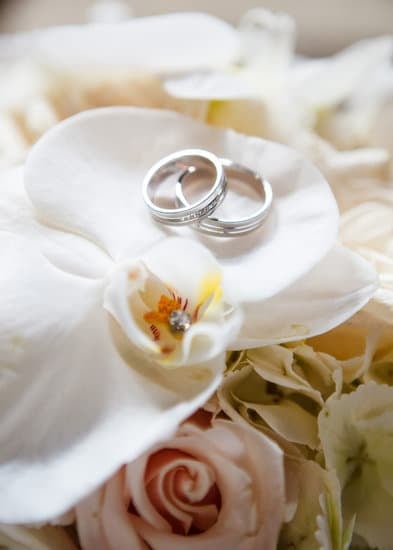
Your wedding invitation wording sets the tone for your special day. It gives your guests a glimpse into the style, formality, and overall atmosphere of your wedding celebration. Whether you’re planning a traditional ceremony or a modern affair, finding the perfect words to convey your message is crucial. From selecting the right language and format to customizing your invitations to reflect your personality as a couple, there are numerous factors to consider when crafting the perfect wedding invitation wording.
The language used on your wedding invitations not only provides essential details such as the date, time, and location of your event but also conveys the mood and theme of your ceremony. It’s an opportunity to express who you are as a couple and create anticipation for what promises to be a memorable occasion.
From formal and elegant to playful and whimsical, there are endless possibilities for creating unique wedding invitation wording that speaks directly to you and your partner’s vision for the big day.
In this comprehensive guide, we will explore everything from traditional wedding invitation etiquette to innovative ideas for non-traditional couples. You’ll discover tips for personalizing your wedding invitation wording, navigating sensitive family dynamics, choosing the right typography and design elements, along with sample wording examples for various types of ceremonies. Let’s dive into how you can make that crucial first impression with thoughtfully chosen wedding invitation wording that captures the essence of your love story.
Traditional Wedding Invitation Wording
When it comes to traditional wedding invitation wording, there are certain elements that should be included to ensure that the important details are communicated clearly to your guests. The key components of a traditional wedding invitation include the names of the hosts, the request line, the names of the couple, the date and time of the ceremony, the location, and the RSVP information.
The format for traditional wedding invitation wording typically follows a specific etiquette. The names of the hosts or families inviting guests to the wedding are usually listed at the beginning of the invitation. Following this, there is a request line which invites guests to attend the ceremony.
The names of the couple getting married come next, followed by details about the date and time of the wedding, as well as its location. Finally, RSVP information is provided so that guests can respond with their attendance.
It’s also important to consider using formal language and spelling out all words in a traditional wedding invitation. For example, instead of writing “Street,” it is customary to write “St.” Similarly, dates and times should be spelled out in full rather than using abbreviations. Adhering to these traditional formatting guidelines helps set the tone for your wedding and gives guests an idea of what to expect on your special day.
| Traditional Wedding Invitation Elements | Format Guidelines |
|---|---|
| Names of Hosts | Listed at Beginning |
| Request Line | Invites Guests |
| Names of Couple | Listed After Request Line |
Fun and Creative Wedding Invitation Wording Ideas for Non-Traditional Couples
Reflecting Your Personalities
For non-traditional couples, the wedding invitation wording is an opportunity to showcase their unique personalities and style. Instead of sticking to the conventional language, consider injecting some humor, wit, or pop culture references into your invitations. Whether you’re movie buffs, avid travelers, or foodies, there are endless ways to infuse your passions and hobbies into the wording of your wedding invitations. Think outside the box and let your creativity shine through in every word.
Inviting Guests to an Unconventional Celebration
If you’re planning a non-traditional wedding ceremony, whether it’s a destination wedding, a casual backyard celebration, or a themed event, let your invitation wording set the stage for what guests can expect. Use playful language that reflects the relaxed and unconventional nature of your upcoming celebration. Whether it’s a quirky poem or a clever rhyme, don’t be afraid to break away from formal traditions and have fun with the wording of your wedding invitations.
Embracing Inclusivity and Diversity
For non-traditional couples who want to emphasize inclusivity and diversity in their wedding celebration, the invitation wording can play a crucial role. Consider using gender-neutral language and inclusive terminology to ensure that all guests feel welcomed and valued. Additionally, if you come from culturally diverse backgrounds or are blending different faiths in your marriage, incorporating multicultural elements into the wording can be a thoughtful way to celebrate your union while honoring your backgrounds.
Tips for Personalizing Your Wedding Invitation Wording to Reflect Your Unique Style
Personalizing your wedding invitation wording is a great way to showcase your unique style as a couple. Whether you are having a traditional, modern, or themed wedding, the wording of your invitation sets the tone for your special day. There are various ways to add personal touches to your wedding invitations, from incorporating meaningful quotes, to reflecting cultural traditions, to highlighting shared hobbies and interests.
One way to personalize your wedding invitation wording is by including a meaningful quote or passage that reflects your relationship. This can be something profound and romantic, or something light-hearted and humorous that captures the essence of your love story. Additionally, consider incorporating elements of your cultural backgrounds or traditions into the wording to make it more meaningful and reflective of who you are as a couple.
Another way to infuse your unique style into your wedding invitation wording is by highlighting any shared hobbies or interests that define your relationship. For example, if you both love traveling, you could incorporate travel-themed language or imagery into the wording of your invitations. If you are both passionate about a certain hobby or activity, find creative ways to weave it into the wording to make it truly personal.
Finally, consider customizing the overall design and layout of the invitation to reflect your personality as a couple. From choosing unique fonts and colors, to adding special embellishments like monograms or custom illustrations, there are countless ways to make your wedding invitations feel like an authentic reflection of who you are as a couple.
| Tip | Description |
|---|---|
| Incorporate Meaningful Quotes | Add a romantic or humorous quote that reflects your relationship. |
| Reflect Cultural Traditions | Incorporate elements from both of your cultural backgrounds into the wording. |
| Highlight Shared Hobbies/Interests | Add language or imagery related to activities you both enjoy. |
Do’s and Don’ts of Wedding Invitation Wording Etiquette
Do’s of Wedding Invitation Wording Etiquette
When it comes to wedding invitation wording etiquette, there are a few key “do’s” that can help ensure your invitations are both elegant and appropriate. It’s important to include the full names of the hosts, whether it’s the parents of the couple or the couple themselves.
Be sure to spell out all words and avoid using abbreviations, including the date, time, and location of the ceremony and reception. Additionally, make sure to indicate if there are specific dress code requirements for your guests.
Don’ts of Wedding Invitation Wording Etiquette
Understanding what not to include in your wedding invitation wording is just as important as knowing what should be included. One major “don’t” is making any mention of gifts or registry information on the actual invitation. It’s also best to avoid using overly casual language or humor that may be misinterpreted by some guests. Another thing to keep in mind is not to list any activities or events that certain guests might not be invited to.
The Importance of Proper Wording
Proper wedding invitation wording is crucial for setting the tone for your special day and ensuring that guests understand what kind of event they’re being invited to. Using correct grammar and etiquette in your invitations can go a long way in showing respect for your guests and emphasizing the importance of the occasion.
By following these do’s and don’ts, you can ensure that your wedding invitation wording reflects the formality and style of your big day while keeping things tasteful and sophisticated.
How to Handle Sensitive Family Situations and Blended Families in Your Wedding Invitation Wording
When it comes to crafting the perfect wedding invitation wording, it’s important to consider the sensitivities and dynamics of your family situation, especially if you have blended families or other sensitive family issues. Here are some tips for handling these potentially tricky situations with grace and tact:
- Consider using separate lines for each set of parents’ names if they are divorced and both contributing to the wedding financially. This can help avoid any potential conflicts and make each parent feel included.
- If you have step-parents who have played a significant role in your life, you may want to include them on the invitation as well. You can use phrases like “together with their families” or “along with their parents” to encompass everyone without singling out specific individuals.
- For blended families, consider using wording that celebrates the joining of two families rather than focusing on specific parental relationships. Phrases like “Two families become one” or “Together with their children” can help convey the unity of your new family structure.
It’s also important to have open and honest conversations with all parties involved in order to ensure that everyone feels respected and included in the wedding invitation wording process. This may involve discussing potential wording options and getting input from different family members to make sure that everyone feels comfortable with the final choice.
Ultimately, the goal is to create an invitation that reflects the love and joy of your special day while also being sensitive to any family dynamics or unique situations that may be present. By approaching these conversations with thoughtfulness and compassion, you can ensure that your wedding invitation wording is a true reflection of your new family unit.
Sample Wedding Invitation Wording for Various Types of Ceremonies (Formal, Casual, Destination, Etc)
When it comes to planning a wedding, one of the most important aspects is getting the wording of your invitations just right. The wording sets the tone for your big day and gives guests an idea of what to expect. Whether you’re having a formal ceremony, a casual affair, or a destination wedding, there are specific etiquette guidelines and wording styles to consider.
For formal weddings, it’s essential to use traditional wording that reflects the elegance and sophistication of the event. This includes using titles such as “Mr.” and “Mrs.” and outlining specific details such as time, date, and location in a clear and concise manner. An example of formal wedding invitation wording could be: “Mr. and Mrs. John Smith request the honor of your presence at the marriage of their daughter, Emily Anne Smith, to William James Johnson”.
On the other hand, if you’re planning a casual wedding, you have more flexibility with your wording. You can add personal touches or include fun and creative language that reflects your personality as a couple. For example, you might use wording like: “We’re tying the knot. Join us for a laid-back celebration of love, laughter, and happily ever after”.
For destination weddings, it’s essential to provide guests with all the necessary information about travel arrangements while maintaining an air of excitement about the upcoming celebration. A sample destination wedding invitation wording may look like: “Pack your bags and join us for an intimate beach ceremony as we exchange vows in paradise.
We can’t wait to celebrate with you under the sun.” No matter what type of ceremony you’re planning, communicating clearly through your invitation sets expectations for your guests before they even arrive at your beautiful event.
The Impact of Typography and Design on Your Wedding Invitation Wording
When it comes to wedding invitation wording, the impact of typography and design cannot be overstated. The fonts and layout you choose for your wedding invitations set the tone for your big day and give guests an insight into the style and theme of your wedding.
From elegant script fonts to modern sans-serif styles, the typography you select can convey a sense of formality, whimsy, or romance. Similarly, the layout of your wedding invitation plays a crucial role in how the information is presented and how visually striking it appears.
Choosing the right fonts for your wedding invitation wording is essential for conveying the mood of your event. For a formal affair, classic and sophisticated fonts like serif or calligraphy styles are often chosen to communicate elegance and tradition.
On the other hand, for a more casual or modern celebration, playful and contemporary fonts in clean lines may be used to express a more relaxed vibe. It’s important to also consider readability when selecting fonts – as beautiful as a cursive script may look, make sure the text is legible for all guests.
The layout of your wedding invitation wording can enhance its visual appeal and help guide readers through the information effectively. Consider how different elements such as text alignment, spacing, and decorative elements like borders or floral motifs can work together to create a harmonious design.
A well-thought-out layout not only makes your invitations aesthetically pleasing but also ensures that all critical details are easy to find at first glance. Whether you opt for a traditional format with centered text or a more contemporary asymmetrical design, the right layout can elevate your wedding invitation wording overall.
Conclusion
In conclusion, the wording of your wedding invitations is an important element of your wedding planning process. It sets the tone for your special day and gives guests a glimpse into what they can expect.
Whether you choose to go with traditional, fun and creative, or personalized wording, it’s crucial to make sure that it reflects your unique style as a couple. The right wording can truly make a lasting impression on your guests and get them excited for the celebration to come.
It’s also essential to consider etiquette and sensitive family situations when crafting your wedding invitation wording. Being mindful of these factors can help avoid any potential misunderstandings or hurt feelings among loved ones. When navigating blended families and different types of ceremonies, finding the right words to include everyone while still maintaining the integrity of the invitation is key.
Additionally, don’t underestimate the impact of typography and design on your wedding invitation wording. The fonts and layout can tie everything together and enhance the overall aesthetic appeal. By carefully considering all these elements and putting thought into each aspect of your wedding invitation wording, you can ensure that you make the perfect first impression with your invitations, setting the stage for a memorable and beautiful wedding day.
Frequently Asked Questions
What Do You Write on a Wedding Invitation?
On a wedding invitation, you typically write the hosts’ names, the couple’s names, the date and time of the wedding, the venue or location of the ceremony and reception, and any additional information such as dress code or RSVP details.
What Is an Example of Wedding Invitation Text?
An example of wedding invitation text could be: “Mr. and Mrs. Smith request the pleasure of your company at the marriage of their daughter, Emily, to John Johnson on Saturday, the fifth of June at three o’clock in the afternoon at St. Mary’s Church, followed by dinner and dancing at The Grand Hotel.”
How Do You Write a Wedding Invitation Message?
When writing a wedding invitation message, it is important to start with a warm greeting for the guests. Then include all necessary details about the wedding such as dates, times, and locations.
It’s also important to convey the excitement and joy of sharing this special day with loved ones. Finally, provide any additional information such as dress code or RSVP instructions to ensure that guests are well-informed and prepared for the event.




